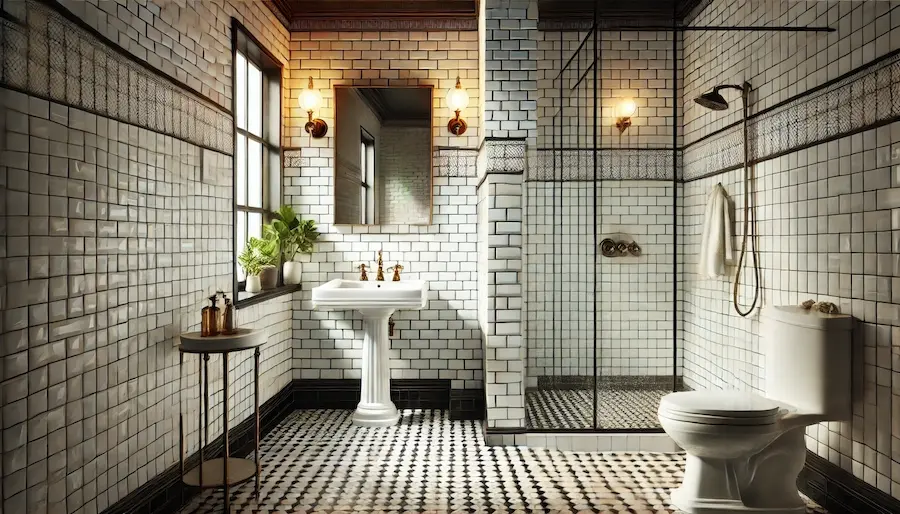Subway tile bathrooms offer a timeless and versatile design choice, seamlessly blending classic aesthetics with modern trends. This article explores the history, key features, applications, and considerations for incorporating subway tiles into your bathroom design.
Introduction to Subway Tile Bathrooms
Subway tiles are rectangular, typically 3×6 inches, and are renowned for their clean lines and adaptability to various design styles. Originally used in early 20th-century subway stations, these tiles have transitioned into residential spaces, particularly bathrooms, due to their durability and classic appeal.
History and Origins of Subway Tiles
Introduced in New York City’s subway stations in the early 1900s, subway tiles were chosen for their glossy finish and ease of maintenance. Their popularity quickly spread to residential bathrooms and kitchens, becoming synonymous with hygiene and simplicity. Over time, subway tiles have evolved in size, color, and finish, allowing for creative applications in modern interior design.
Key Features of Subway Tile Bathrooms
- Versatility: Subway tiles complement various design aesthetics, from traditional to contemporary, and can be arranged in multiple patterns, such as herringbone or vertical stacks.
- Durability: Made from materials like ceramic or porcelain, subway tiles are resistant to moisture and stains, making them ideal for bathroom environments.
- Ease of Maintenance: The smooth surface of subway tiles allows for easy cleaning, contributing to their enduring popularity in spaces requiring high hygiene standards.
- Cost-Effectiveness: Subway tiles are generally affordable, offering a budget-friendly option for bathroom renovations without compromising on style.
Applications of Subway Tiles in Bathrooms
- Walls: Subway tiles are commonly used on bathroom walls, providing a clean and polished backdrop that enhances the room’s brightness.
- Showers: Lining shower walls with subway tiles creates a waterproof barrier and a timeless look that complements various fixture styles.
- Backsplashes: Installing subway tiles behind sinks protects the wall from water damage while adding a classic design element.
- Accent Features: Subway tiles can be used to create accent walls or decorative borders, adding visual interest and depth to the bathroom.
Considerations When Choosing Subway Tiles for Bathrooms
- Grout Color: The choice of grout color can significantly impact the overall look; contrasting grout highlights the tile pattern, while matching grout creates a seamless appearance.
- Layout Patterns: Exploring different tile layouts, such as herringbone or vertical stacking, can add a unique touch to the design.
- Finish Options: Subway tiles are available in various finishes, including glossy and matte; selecting the appropriate finish can influence the bathroom’s ambiance.
- Size Variations: While the traditional size is 3×6 inches, subway tiles come in various dimensions; choosing the right size can affect the room’s perception and style.
Conclusion
Incorporating subway tiles into your bathroom design offers a blend of historical charm and modern versatility. By considering factors such as grout color, layout patterns, and finishes, you can create a personalized and timeless bathroom space that reflects your unique style.
